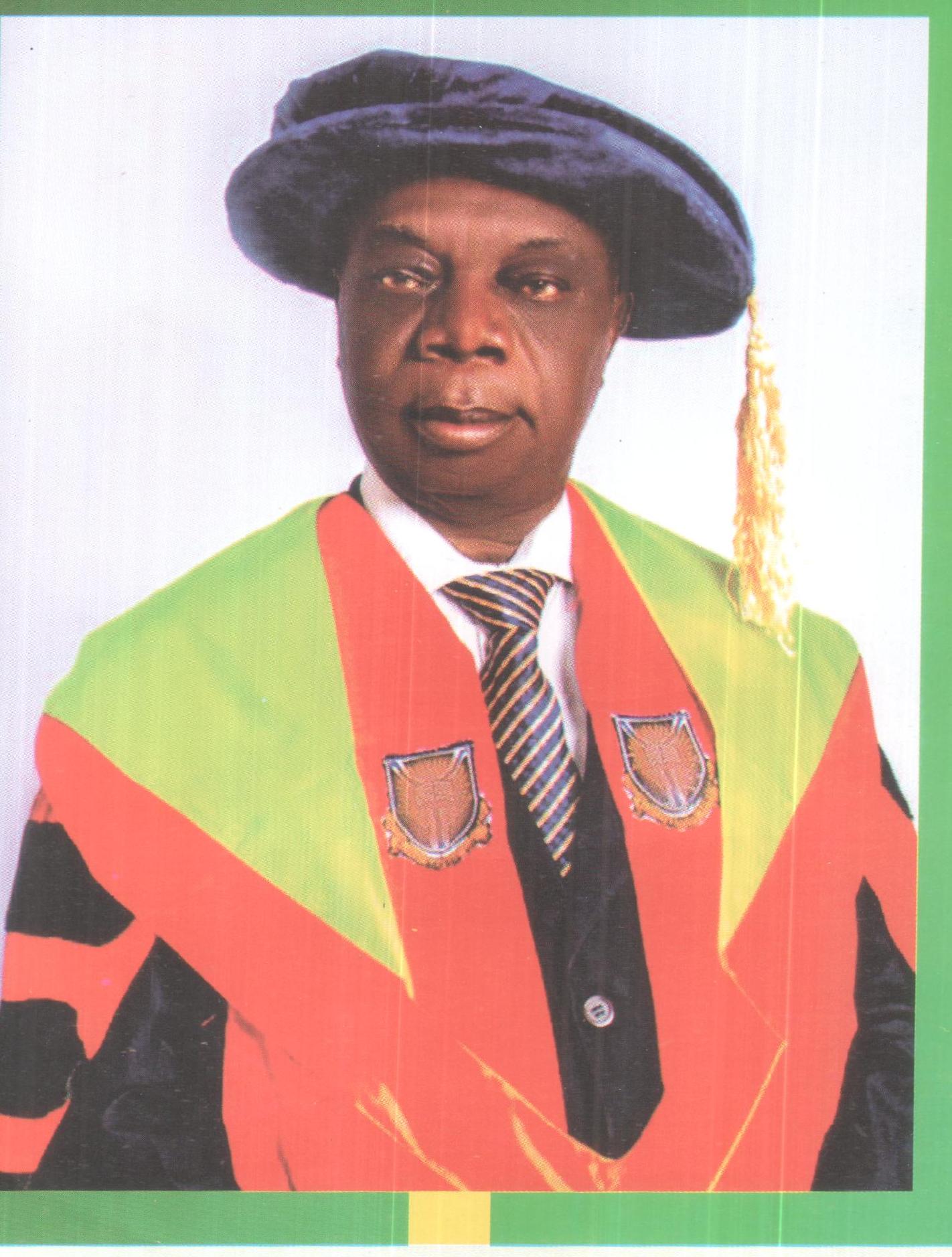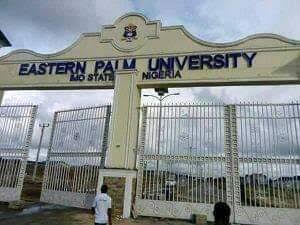– As Rector, Chukwuka, Highlights Importance Of Science Laboratory Technology In Environmental Pollution Monitoring
The Imo State Polytechnic, Omuma in Oru East Local Government Area held it’s first inaugural lecture series on Thursday, October, 19, 2023.
The event which is said to be the first of its kind by any polytechnic in the South East geopolitical zone was held in the school auditorium where the management, staff and students of the institution were held spell bound by the Rector, Prof Kanayo .S. Chukwuka’s well researched, beautifully packaged and articulated discourse which highlighted the dangers of environmental pollution, and degradation occasioned by human activities, the challenges of urbanization and the lackadaisical attitude of government towards the reports and advice of experts on how to avoid or at least address the situation with minimal damage.
Prof Chukwuka, in the lecture titled, “The Role of Science Laboratory Technology in Environmental Pollution Management”, stressed the need for the use of scientific data and environmental impact assessment when necessary.
According to him, “the primary purpose of environmental monitoring is to regulate and mitigate the environmental implications of an organization’s operations, either to ensure that laws and regulations are followed or to limit the possibility of harmful environmental effects and protect public health. As human population, industrial activities, and energy consumption continue to rise, the continued development of sophisticated, automated monitoring applications and tools is critical for improving the accuracy of environmental monitoring reports and the efficiency of the environmental monitoring process. Monitoring programmes are public summaries within an organization that define the elements being monitored, overarching objectives, specific strategies, proposed sample procedures, projects within each approach, and time constraints.
The benefits of environmental monitoring stem from its capacity to increase societal standards of living by emphasizing the link between environment and health. To keep residents informed about the status of their environment, environmental monitoring data must be converted into information and swiftly distributed to the community. The protection of public water supplies, the management of hazardous and radioactive waste, the identification and analysis of pollution sources that affect urban air quality and its effects on human health, the protection and management of natural resources such as soil and water supplies, the identification of population density patterns in relation to natural resources and economic development, the mapping of identification of population density patterns are all examples of projects that have been completed. Environmental monitoring makes it simpler to understand and investigate the complexities of the environment in connection with hazards associated with them. The aims are to understand and restrict the consequences, to follow environmental regulations, and to protect the environment and public health. Environmental monitoring metrics reveal how the ecosystem reacts to outside activity. Environmental monitoring can be done in real time or in samples.
In order to continue to objectively provide reliable data, the basis on which decisions should be made with regard to improving the state of the environment, agencies responsible for monitoring the environment require the establishment of laboratories for collecting and/or analyzing samples. Hence, the Science Laboratory Technology (SLT) is a very broad and lengthy bridge-making profession that serves as a linkage between the various fields of sciences and technologies. Science Laboratory Technology (SLT) provides critical link in the knowledge of Environmental studies (Mohammed et al 2017). Science laboratories must have the capacity to provide data that is reliable, using test methods that are appropriate for the parameters and their limits or acceptable ranges. Hence, there is a need for continuous building of laboratory capacity, both nationally and regionally, to monitor and evaluate environmental quality. Building laboratory capacity involves the acquisition and use of suitable equipment and training of staff. Specifically, the need for building laboratory integral to the development and implementation of environmental monitoring and surveillance programmes seeking to use evidence-based laboratory data to establish baselines and to inform the results of amelioration efforts”.
“It is important to remember that monitoring environmental pollution necessitates numerous field samplings and laboratory analyses. Modern laboratories, on the other hand, have been established, sometimes as a replacement for conventional laboratories that need scientific laboratory technology competence, which entails the application of Nanoscience craft skills.
For the sake of emphasis, the importance of this ancient or long-established profession is well known. Recent discoveries, however, cannot replace or substitute for conventional laboratories, in which Science Laboratory Technology (SLT) is a vital and critical aspect to be taken into consideration. Because it links the recognized scientific ideas, hypotheses, inventions, innovations, and physical realities of all scientific and technical experiences, this is more crucial than ever.
The SLT is a wide-ranging and protracted profession that builds bridges and acts as a link between diverse fields of science and technology. (Adewoye, 2007). Science Laboratory Technology (SLT) professionals are needed by experts in science, technology, and innovation. In a number of crucial fields, such as environmental impact assessments and impact statements, environmental engineering and technology, wildlife technology, midwidfery or husbandry services. They play a crucial role in the knowledge economy as well”.
The purpose of an environmental monitoring method or procedure is to learn about the levels of dangerous pollutants in the atmosphere and their consequences on the environment, human life, animals, and trees. Data gathered from the environmental monitoring technique can be utilized to forecast future problems. It also enables the early detection of natural disasters so that preventative steps may be taken to mitigate their effects. The data collected from the environmental monitoring approach would be incomplete without the additional work and input of the numerous tests to be performed on the field sample collection. Samples collected during environmental monitoring are transported to the laboratory for examination, indicating the relevance of the laboratory.
The world has made advancements since the Industrial Revolution in a variety of sectors, including technology, chemistry, medicine, infrastructure, and more. However, this rapid growth has had a very detrimental effect on our ecology. Significant action is also required since it has an impact on both the ecosystem as a whole and our environment. Implementing suitable procedures to evaluate contaminants, indoor air quality, and other factors has therefore become crucial. At this stage, an environmental laboratory will be helpful. Specialists in Science Laboratory Technology measure components including sulphates, hydrocarbons, carbon dioxide, nitrates, oxidants, particles, and volatile organic compounds to assess air quality, such as total suspended particulates (TSP). Numerous factors, including those that might be damaging to the environment or ecosystem, such as flow pattern, turbidity, dissolved oxygen, phosphorus, and other components or compounds that impact quality of water.
Prior to the project’s commencement, surface and subsurface water samples are also examined in a physico-chemical laboratory to determine the kind or concentration of pollution load. A number of physic-chemical laboratory tests are also performed on the soil samples to identify and measure different metallic ions, pH, and other significant characteristics. It is also necessary to establish the geotechnical and engineering features of the various soil profiles. Thus, without the crucial contributions of the laboratory and SLT specialists, environmental pollution monitoring becomes impossible (Mohammed et al 2017)”.
Speaking at the occasion which was attended by the Heads of all the campuses and other principal officers of the school, the Commissioner for Education, Prof John Cliff Nwadike, who represented the Governor, Senator Hope Uzodinma, who is the Visitor of the institution, commended the Rector, who he described as a walking encyclopedia who has set the pace for others to follow.
Fielding questions from newsmen shortly after the event, Prof Kanayo .S. Chukwuka stressed the need for urgent steps to be taken towards mitigating the effects of climate change.






